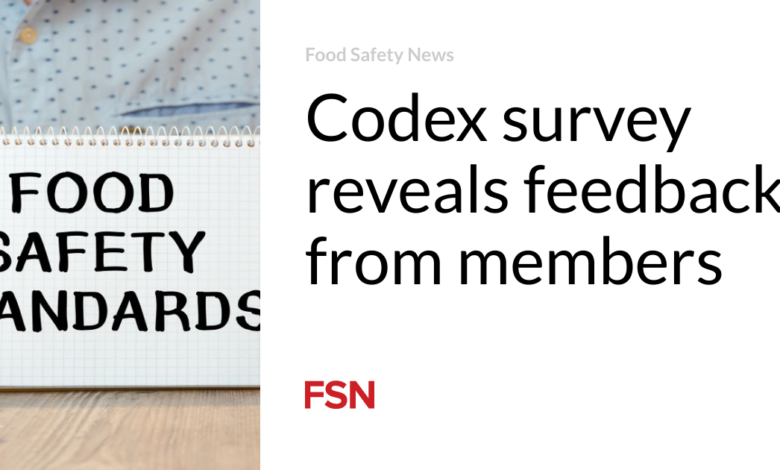Codex survey reveals feedback from members

Codex has revealed findings from its second member survey on the use and satisfaction with selected texts and how familiar countries are with certain documents.
The Codex Secretariat conducts a yearly survey for all members to measure the use and impact of Codex texts.
The survey focused on the general standard for food additives, guidelines on nutrition labelling, recommended methods of analysis and sampling, and guidelines on performance criteria for methods of analysis for the determination of pesticide residues in food and feed.
There were 131 responses from Codex members in 2023, for an overall response rate of 69 percent. This is higher than the 52 percent response rate in 2022.
Results showed that 83 percent of members were familiar with the general standard for food additives, 78 percent with the guidelines on nutrition labelling, and 71 percent with the recommended methods of analysis and sampling. Only 56 percent were aware of the guidelines on performance criteria for methods of analysis for the determination of pesticide residues in food and feed. Nine participants said they were unfamiliar with all four of these texts.
Usefulness and satisfaction
More than 80 percent of respondents found that Codex texts were mostly or extremely useful in meeting priority food safety and quality needs for their country.
Responses show that low and middle income countries (LMICs) gained more knowledge from Codex texts than high income countries (HIC). Approximately 80 percent of LMIC respondents said they gained a great deal or quite a bit of knowledge from the texts. In contrast, 70 percent of HIC respondents indicated they only “somewhat” gained new knowledge from Codex texts. HICs may have more capacity to carry out their own risk assessment and standard setting work.
There is less satisfaction with the timeliness of Codex texts compared to their authority and credibility. This indicates that while the texts are respected for their content and reliability, members would welcome a timelier approval process. However, there is a recognized trade-off between authority and credibility, and timeliness.
Approximately 80 percent of LMIC respondents said they use Codex texts, “a great deal” or “quite a bit,” as a baseline to inform food legislation, policies, regulations, programs or practices. In contrast, more than 70 percent of HIC respondents use the texts “somewhat” or “very little” as a baseline.
Almost 70 percent of LMICs use Codex texts, “completely or mostly,” to support national food control systems. However, almost 60 percent of HICs use them “somewhat” to support such systems.
A total of 70 percent of LMICs found Codex texts “mostly” or “completely” helpful in increasing awareness of food safety and quality issues and evidence-based interventions and recommendations. Overall, more than 60 percent of HIC respondents considered the texts somewhat helpful in this regard.
Things to improve
Many LMIC respondents find that Codex texts are “mostly” or “somewhat” effective in helping their countries access international markets for food products.
The main barriers that hinder the application of Codex texts at national level were a lack of resources, a lack of local implementation capacity, the duration of national implementation, and poor awareness of Codex by national stakeholders.
To tackle these issues there is a need for high-level political commitment to food safety and quality governance, standards adoption and implementation. Demonstrating the benefits of food control systems and standards implementation for consumer health and trade may help secure support.
World Food Day
Meanwhile, the Food and Agriculture Organization of the United Nations (FAO) recently marked World Food Day at the Dubai International Food Safety Conference.
The event gathered 3,000 experts from various countries including a panel of three speakers from different FAO offices. Themed “Future Foresight in Food Safety,” the conference, held from Oct. 21 to 23, addressed some of the challenges facing the food sector.
The meeting highlighted tools to improve food safety, including AI-powered inspection technologies, predictive analytics, and other emerging tools designed to manage future risks. Sessions focused on topics ranging from genetically modified foods to the future of food testing and safety protocols.
(To sign up for a free subscription to Food Safety News, click here.)



